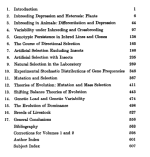ApostateAbe
Veteran Member

The above image is a screenshot of a recent Facebook post by David Duke, which passed on a meme common among the Alt Right. The politics of David Duke truly is, in Clinton's word, deplorable. And, on this matter of biology, the sarcastic argument of David Duke is entirely correct. The mainstream left drifted to an absurd extreme long ago, which gave David Duke an opportunity to appear rational. Biological races are absolutely essential to evolutionary biology, evolutionary divergence would not happen without such races, and human races are no exception. Races happen whenever a species diverges geographically, as their frequencies of genetic variants diverge along with it. It is a fundamental principle of biogeography and population genetics. There is continuity, overlap and arbitrary divisions among races? There is more variation within than between each race? A member of one race shares almost all genes with a member of another race? Yes, yes, and yes: all of these points are true for races of ANY OTHER SPECIES with geographic and genetic divergence. David Duke merely echoed a point made by the renowned evolutionary biologist Ernst Mayr in 2002, in his article, "The Biology of Race and the Concept of Equality," and he was right: "Races are not something specifically human; races occur in a large percentage of species of animals." Mayr said that the people who deny the biology of human races are "obviously ignorant of modern biology." The science of Mayr was right, but Mayr did NOT share with Duke the inference that, therefore, different human races shouldn't be allowed to live together. But, Mayr is now dead, and now only two types of people are publicly defending the accurate science:
- Racists.
- "Racists."



